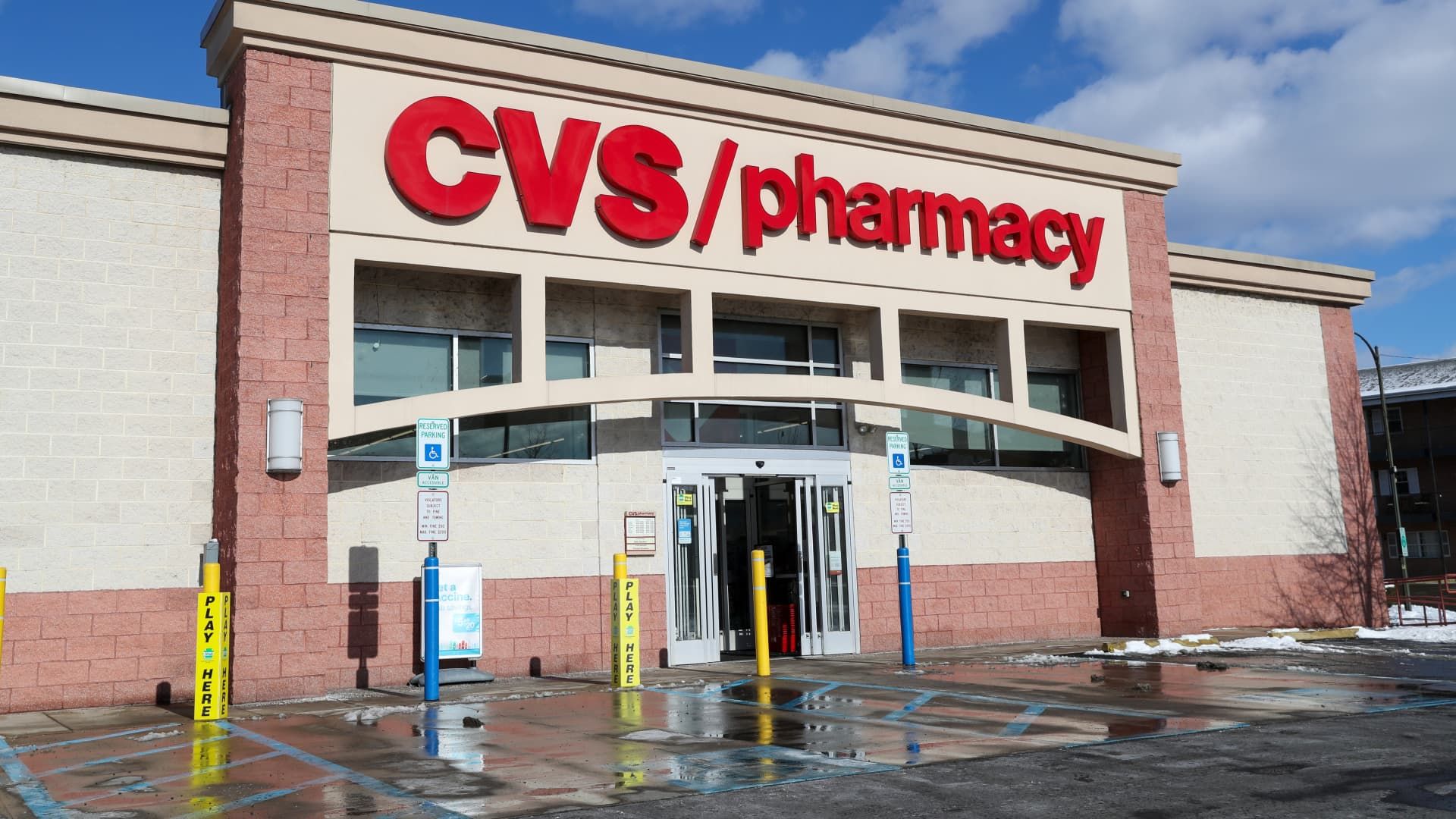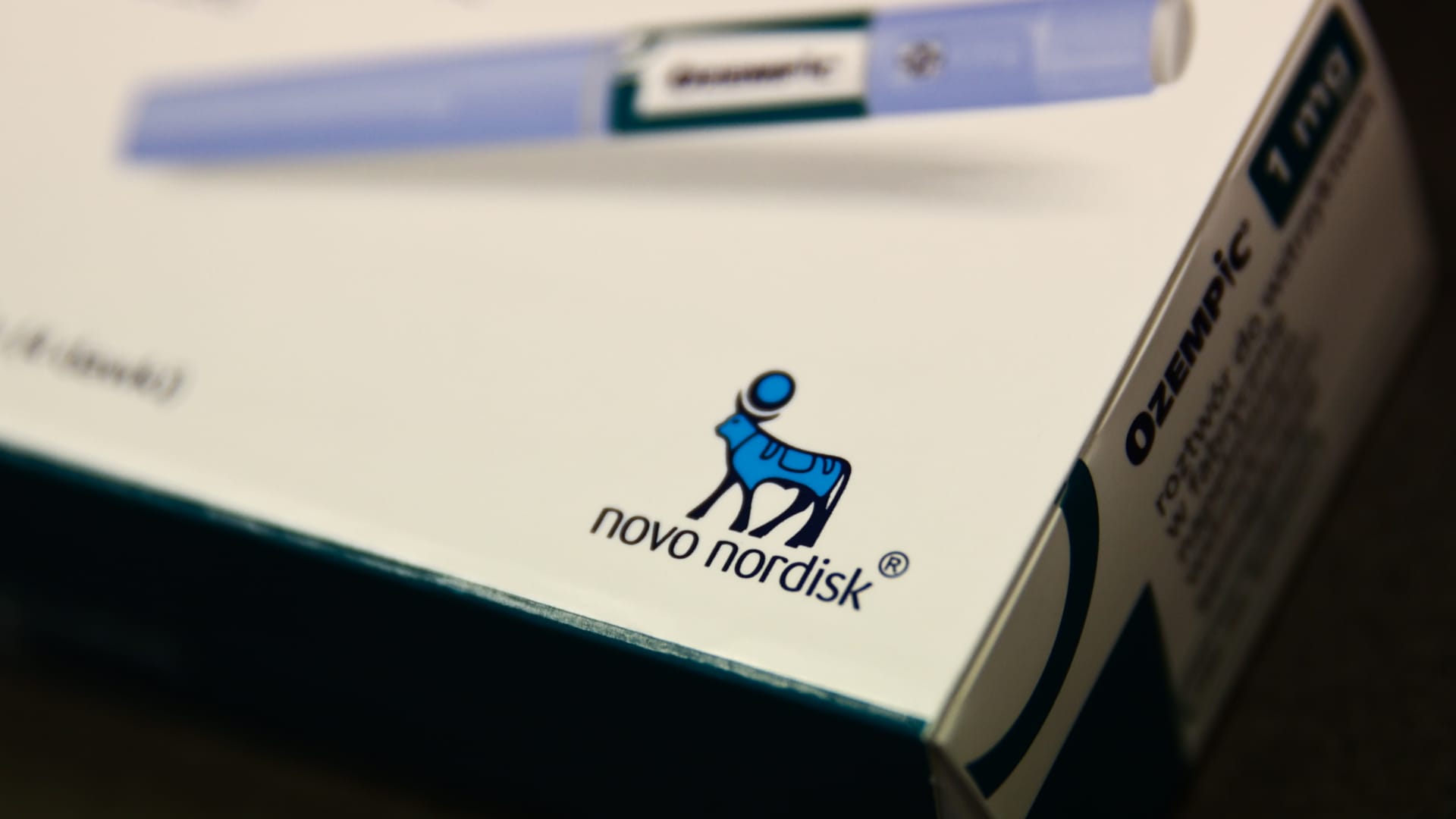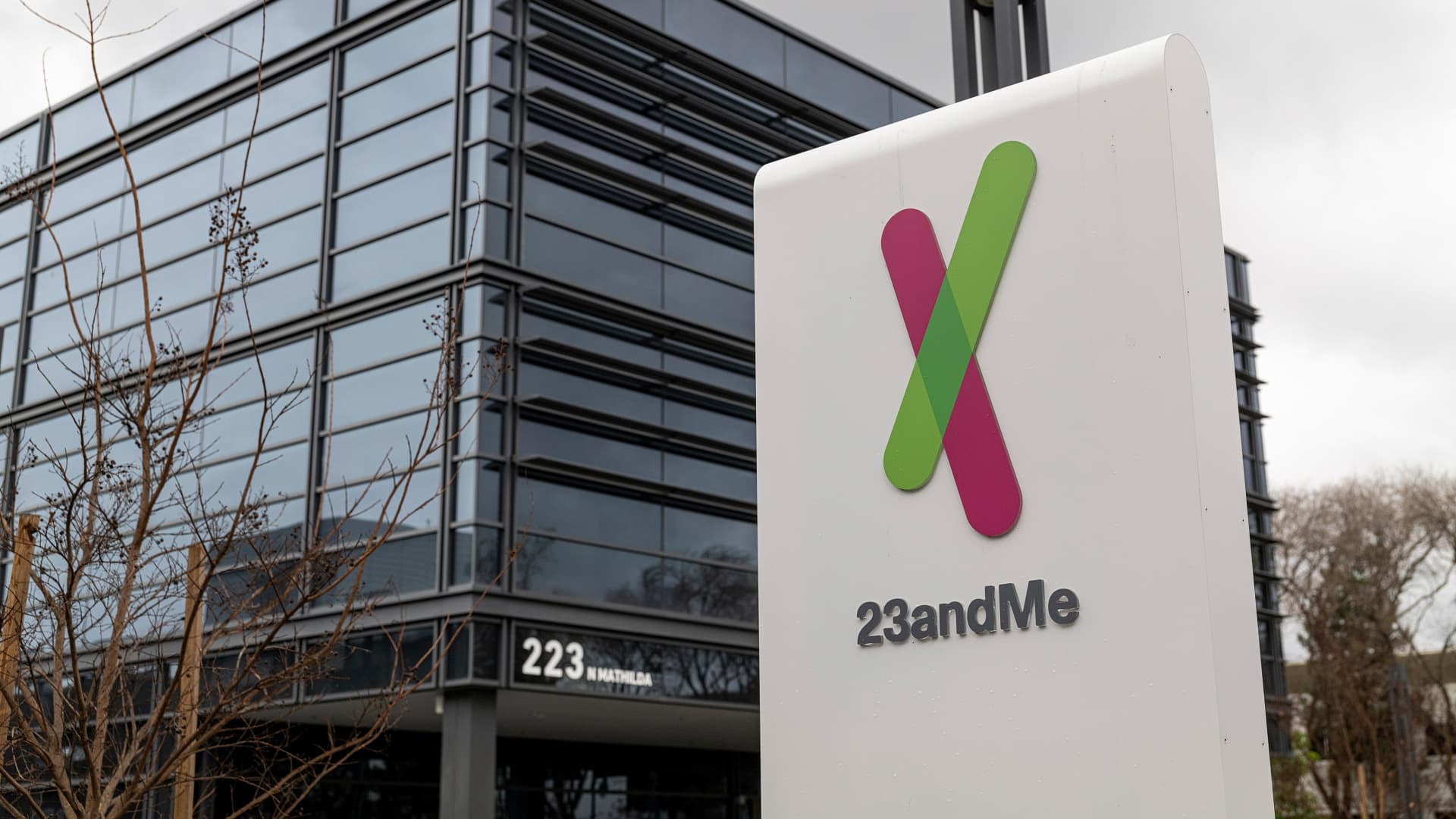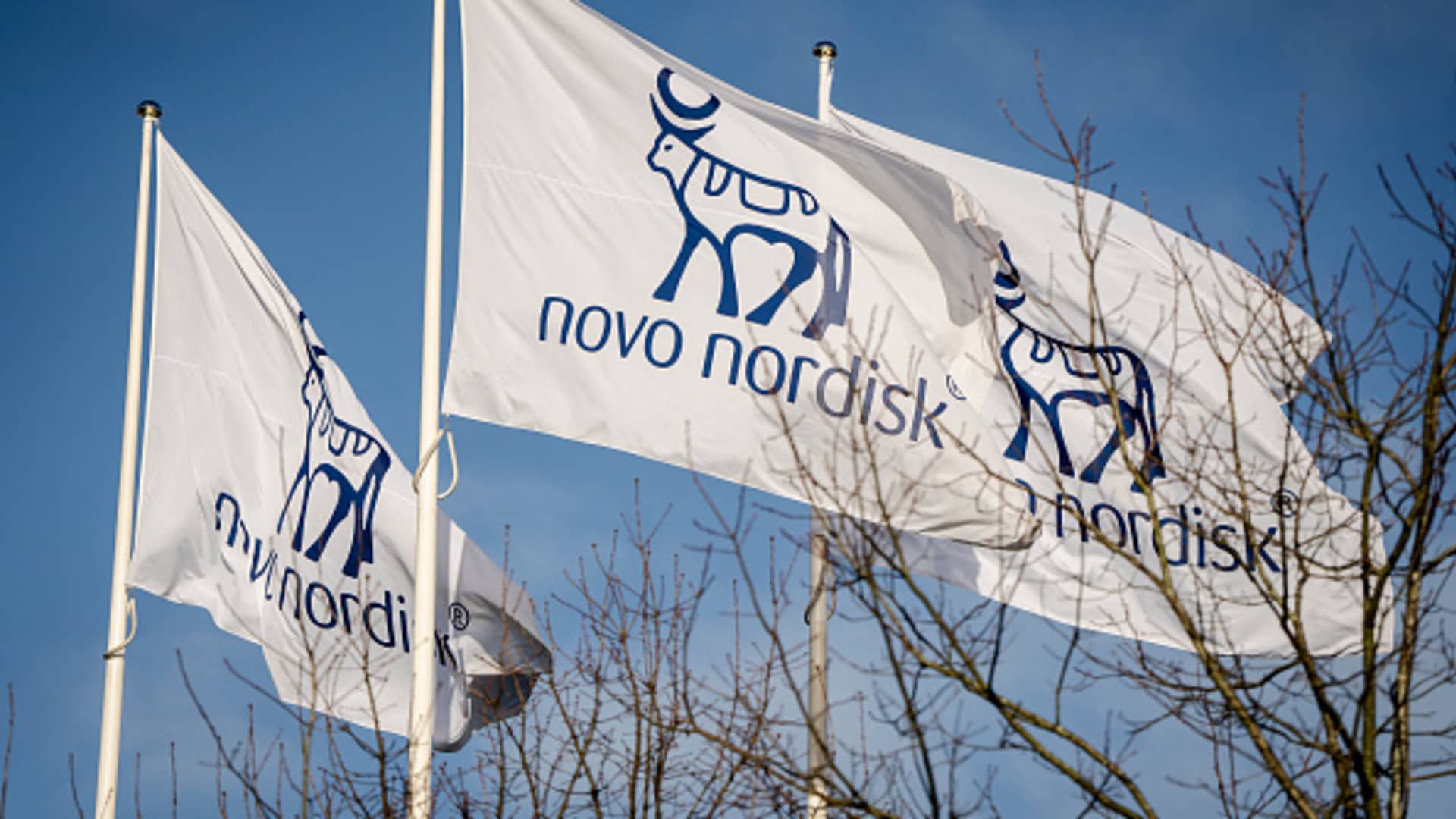CVS health On Wednesday, he reported income and profits of the fourth quarter that overcame estimates, even when his problems with problems continued to see higher medical costs.
The company also issued an adjusted profits from 2025 per year of $ 5.75 to $ 6 per share, which was in line with the expectations of Wall Street. But CVS did not provide an income forecast for the year.
He has the first complete quarter with David Joyner, an executive of CVS for a long time, as CEO of the problemal pharmacy chain. Joyner happened to Karen Lynch in mid -October, since CVS fought to generate greater profits and improve their stock performance.
The company underwent managerial reorganization as part of a broader response plan that includes $ 2 billion in cost cuts in the coming years. CVS has dealt with the increase in costs in its insurance unit, AETNA, and a retailer pharmacy business pressured for more soft consumption expenses and lower reimbursements for prescription medications.
This is what CVS reported for the fourth quarter compared to what Wall Street expected, based on a LSEG analysts survey:
- Profit per action: $ 1.19 per adjusted action compared to 93 cents per expected action
- Revenue: $ 97.71 billion compared to $ 97.19 billion expected
The company's shares closed 15% higher on Wednesday.
The CV and other insurers, such as UnitedHealth Group and human, have seen medical costs increase during the last year as patients with Medicare advantage return to hospitals for the procedures that delayed during the pandemic.
Medicare Advantage, a private administration health insurance plan hired by Medicare, has long been a growth and profits promoter for insurers. But investors have been concerned about fugitive costs linked to these plans, which cover more than half of all Medicare beneficiaries.
CVS reserved sales of $ 97.71 billion for the fourth quarter, 4.2% more than the same period a year ago due to growth in its business and pharmacy business.
The company registered net income of $ 1.64 billion, or $ 1.30 per share, for the fourth quarter. That is compared to the net income of $ 2.05 billion, or $ 1.58 per share, for the period of year more than the year.
Excluding certain elements, such as intangible assets, restructuring charges and capital losses, adjusted profits were $ 1.19 per action for the quarter.
CVS said that their fourth trimester profits reflect greater medical costs in their insurance business and lower rating of Star Medicare Advantage for the year of Payment 2024, which weighed the operational results of the segment for the quarter. These stars grades help Medicare patients to compare the quality of Medicare health plans and medications.
But CVS hopes to improve the margins in his Medicare Advantage business in 2025, in part by reducing their membership in those plans for a “percentage of a single digit” at the end of 2024, Joyner said in a earning call on Wednesday. He added that the company has improved the Medicare Advantage Star qualifications for the year.
“Our approach remains to fulfill our commitments with our members of Medicare Advantage while creating a viable path to the appropriate margins,” said Joyner.
Companies may decide to stop covering patients in the markets they determine are not profitable, and patients who lose insurance can register in a new Medicare Advantage plan or join the traditional Medicare plans.
Pressure in the insurance unit
The three commercial segments of CVS exceed the expectations of Wall Street for the fourth quarter.
The CVS insurance business booked $ 32.96 billion in revenues during the quarter, more than 23% from the fourth quarter of 2023. Analysts expected the unit to collect $ 32.89 billion for the period, according to Streetacount estimates.
But the business reported an adjusted operational loss of $ 439 million for the fourth quarter, compared to adjusted operational revenues of $ 676 million in the most annual period. This change was promoted by higher medical costs and the company's Star Star qualifications of the company, among other factors.
The medical benefits index of the insurance unit, a measure of the total medical expenses paid in relation to the premiums collected, increased to 94.8% from 88.5% annual before. A lower relationship generally indicates that a company collected more on premiums than it paid for benefits, resulting in greater profitability.
The ratio of the fourth quarter was lower than that of 95.9% that analysts expected, said Streetacount estimates.
“Medical trends remain high, although what we experience in the fourth quarter was less severe than we assumed,” said the CVS Thomas Cowhey CFO in the call.
The CVS Health Services segment generated $ 47.02 billion in revenues for the quarter, more than 4% compared to the same quarter in 2023. Analysts expected the unit to publish $ 44.06 billion in sales for the period, according to Streetacount.
That unit includes CaMark, one of the largest pharmacy benefits managers in the country. Caremark negotiates discounts on medications with manufacturers in the name of insurance plans and create lists of medicines or forms, which are covered by safe and reimburse pharmacies for recipes.
The CVS Health Services Division processed 499.4 million pharmaceutical claims during the quarter, below 600.8 million during the previous year due to the loss of a large nameless customer. Tyson Foods He told CNBC in January 2024 that CVS dropped as a pharmacy benefits manager for his approximately 140,000 employees, but it is not clear if any other company stopped working with CVS during the year.
The CVS consumer pharmacy and well -being division reserved $ 33.51 billion in sales for the fourth quarter, more than 7% of the same period of the previous year. Analysts were waiting for sales of $ 33.03 billion for the quarter, said Streetacount.
This unit dispenses the prescriptions in the more than 9,000 retail pharmacies of CVS and provides other pharmacy services, such as vaccines and diagnostic tests.
The increase was partly driven by a higher prescription volume, said CVS. The pharmacy reimbursement pressure, the launch of new generic medicines and the lowest volume of the store front items, such as the food of the pantry and the toiletries, even of the diminished store count, weighed in the unit sales.












